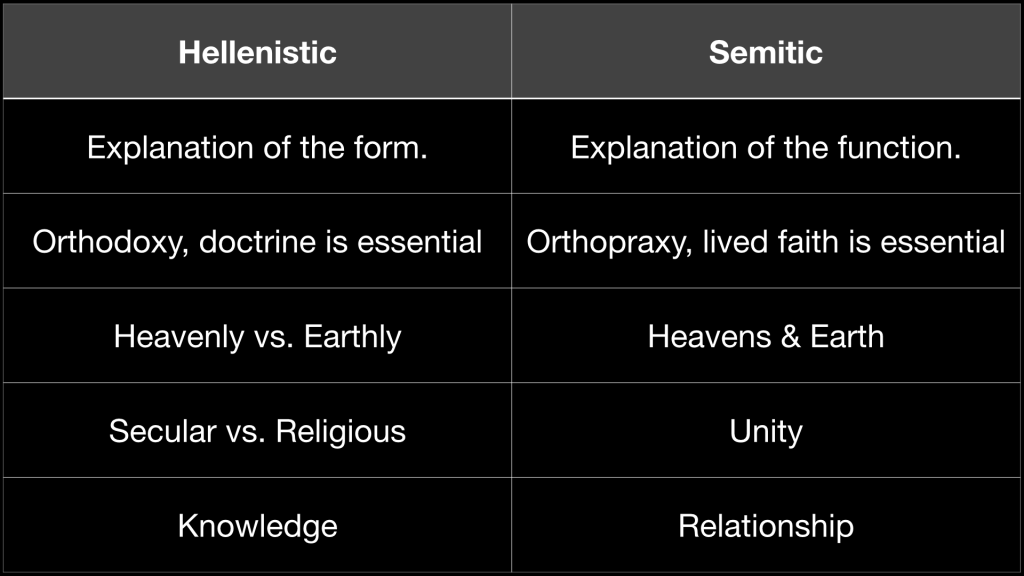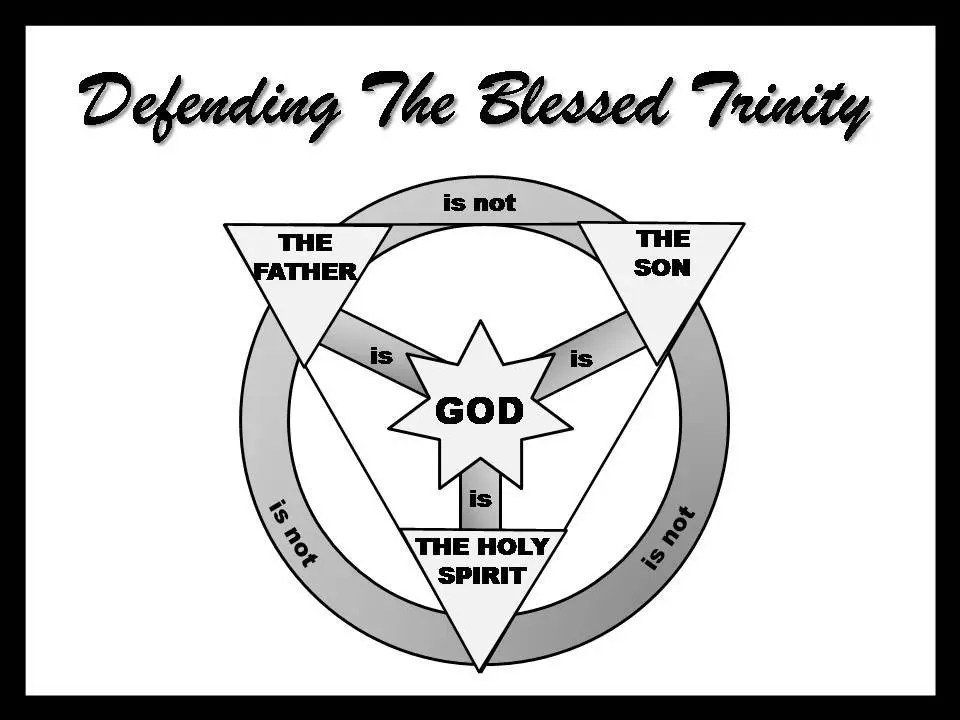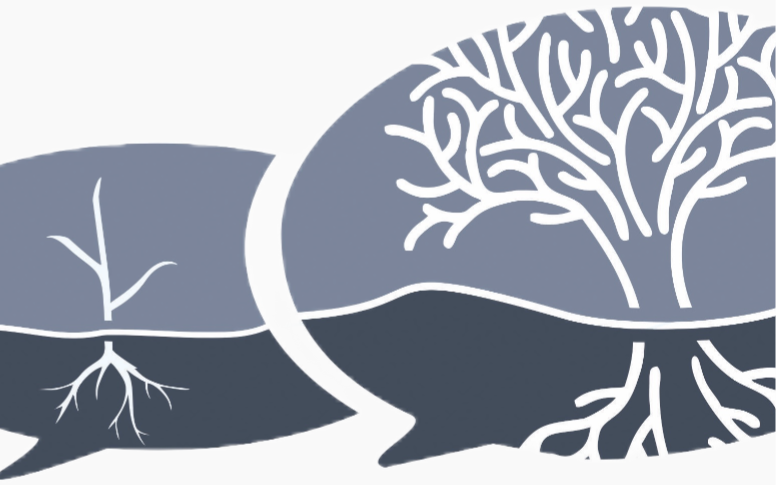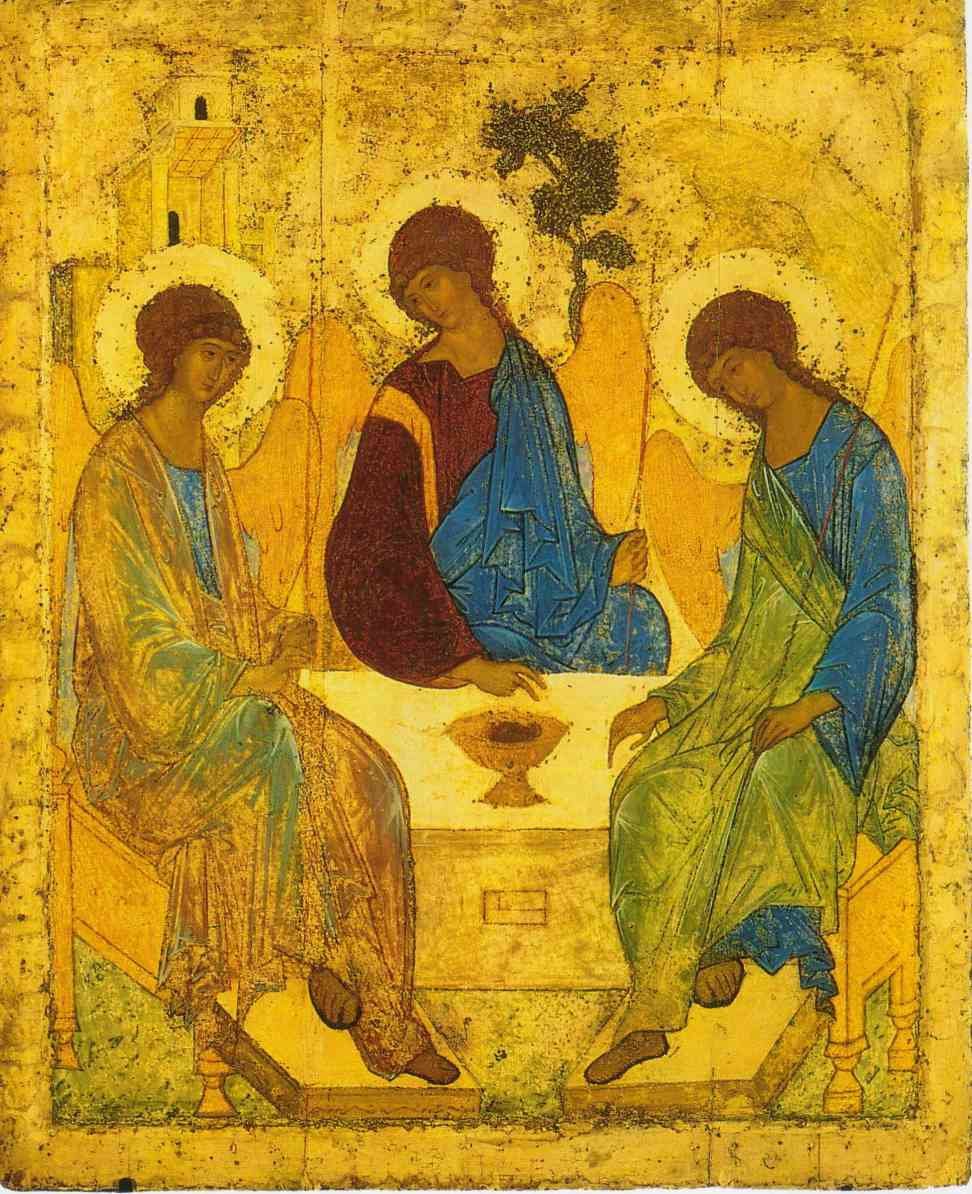Good morning. So for those of you who don’t know me obviously my name is Joe. Part of the reason I’m standing here right now is that I’m a recovering Lutheran pastor. And I mean that in a few different ways.
Recovering, Lutheran, Pastor
In one sense there’s a part of me that is still a pastor that deeply values elements of the Lutheran tradition, who is recovering from the way I lived before relentless love captivated me. If you heard me preach my story here at The Sanctuary a couple years ago, or came to my session on addiction and relentless love at our last conference, you know the details. If you haven’t and you’re curious, they’re readily available online.
In another sense, I am someone who is deeply pastoral in how I approach all of life who is recovering from the effects of Lutheranism on my soul. I would say I grew up in a faith that amplified shame while dismissing guilt, but God has since invited me into a place where faith disempowers shame and invites guilt to be a teacher.
And in yet a third way, I am recovering from being a Lutheran pastor. For years I preached and taught from a place that I no longer agree with. I did this as a youth pastor, a church planter, and in a congregational setting. I am learning to live a life of pastoral amends and remain hopeful that what I preach today might bring healing to some of the very wounds I created years ago.
Trinity Sunday
So there you have it, three words, recovering, Lutheran, and pastor, each with their own meaning, but in order to really make sense of them in my life, you need to look at the in between. You need to understand their relationship to one another.
I would say that the same thing is true of God as revealed in the Bible, but you wouldn’t guess that from how we typically talk about God.
Today, is Trinity Sunday. It’s the day when churches throughout Western Christendom celebrate God’s Triune nature. What does it mean for God to be Father, Son, and Holy Spirit; Creator, Redeemer, and Sanctifier; Thought, Word, and Breath; or Nursing Mother, Mother Hen, and Comforter?
More often than not, I have found myself trying to avoid conversations about the Trinity because the whole three in one thing just seems confusing and non-sensical. I feel a bit like Enlightenment philosopher Immanuel Kant who once said, “Absolutely nothing worthwhile for the practical life can be made out of the doctrine of the Trinity, taken literally.”
But I don’t think that is God’s fault, instead, I think the problem is how we engage in God talk.
Two Ways To Talk About God
One of the more challenging books I read in seminary was Catherine Lacugna’s, God For Us: The Trinity and the Christian Life. If you want a more accessible version, I would suggest Richard Rohr’s, The Divine Dance.
Lacugna opens saying there are two ways to engage in God talk. The first is talking about God. The second is telling God’s story. You and I are most familiar with talking about God because talking about things is what we do in the Western world. But the Bible, the Early Church, and the traditions stemming from Eastern Orthodoxy focus on telling God’s story, because that is what people do in the Near East.
What does that mean? How is Greek or Hellenistic thought, which the Greeks passed on to the Romans who gave it to the rest of Western civilization, different from Semitic thought processes that shaped Judaism? This chart offers a few differences.

The Eastern vs. Western Mind
As an example of the first line on explanation, this past Monday evening I had a flight from Chicago to Denver. We were supposed to take off at 9:30 central, but I didn’t get on the plane until after 10. Turbulence tossed the plane around the sky on takeoff and, despite the captain’s expectations, continued to mess with the plane throughout the flight. Then, when we landed in Denver more than an hour later than expected, no gates were open because departing flights were waiting for a single refueling truck to fill them up.
Now, in the West, most of us would call that a rough flight. After all, the form of the flight included an array of delays and discomforts. However, for a Semitic mind, which focuses on the function, while not ignoring the inconveniences, the final assessment of the flight is that I got from Chicago to Denver, so it was a good flight. In our world, the quality of the flight comes first, but for them, the key question is whether or not the flight accomplished its intended purpose.
More East vs. West
As another example, when we in the West talk about heaven and hell we often associate heaven as good and earth as bad. As a consequence, most of Western Christianity focuses on how to escape earth and get to heaven. But in the Semitic mind, heaven and earth references the whole of God’s creation, none of which is inherently bad. The problem on earth is that we don’t live under the rule and reign of God. So rather than escaping earth to get to heaven, the call is to bring heaven to earth by believing the Gospel.
The phrase, “believing the Gospel,” brings us to another example. In the West, belief is about intellectual ascent, but in the East, belief is about how faith shapes the way you live. A clear example of this that brings us back to the Trinity centers on what I most remember about Trinity Sunday growing up. That was the one Sunday of the church year when we would profess, in unison, all 745 words of the Athanasian Creed.
A Bit of Church History
For those of you who aren’t familiar with Church History, let me offer a brief recap of Athanasius and the creed named after him.
As the Christianity expanded from the Semitic to the Hellenistic world, debates arose over how to talk about the persons of the Trinity. One of the most well known teachers of the day, a man named Arius, taught that Jesus was similar to God. But this caused problems because being similar to God does not mean being the same as God. So at the Council of Nicaea in 325 AD, the central question was whether Jesus was homoousias (one substance) with God or homoiousias (similar substance) with God.
Athanasias, nicknamed the Black Dwarf, was a third century bishop in Alexandria who is credited as leading the one substance movement. His detailed articulation of Jesus, which he writes about in his book, On the Incarnation, played a central role in the conclusion that Jesus was homousious with God.
Aristotle and the Substance of God
But why was the substance of Jesus such a huge deal for the Western mind? Because Aristotle, who lived and died more than 300 years before Jesus, taught that there were ten different qualities to thing, eight of which have English equivalents.
Those ten included both substance and relationship, identified as kind and relation on this graphic from Michael Hanna Studios. But of the ten things, substance was most important. So in the Greek mind, if you want to believe the Gospel, you better know the substance of Jesus.

So that is what the vast majority of the Athanasian Creed centers on.
The Athanasian Creed
As you see here, it begins: “Whoever wants to be saved should above all cling to the catholic faith. Whoever does not guard it whole and inviolable will doubtlessly perish eternally.”
Heartwarming, isn’t it. And deeply troubling given that salvation suddenly depends on correctly embracing the highly cerebral breakdown of the catholic faith that follows.
As we scroll through the text of the creed, notice just how redundant it gets with lines like:
Thus the Father is God; the Son is God; the Holy Spirit is God: And yet there are not three gods, but one God. Thus the Father is Lord; the Son is Lord; the Holy Spirit is Lord: And yet there are not three lords, but one Lord.
It isn’t until the last nine of the forty-three lines that the Creed, that it even begins to discuss the activity of God, and two of those nine lines are, “This is the catholic faith. One cannot be saved without believing this firmly and faithfully.”
Yet what human being has ever read a breakdown of the substance of the three persons of the Trinity and said, “That’s it, I get it now, I’m a beloved child of God!” In fact, I’m guessing more than one of you right now is bored out of your mind as I try to lay out why the way we talk about the Trinity bores us out of our minds.
The Trinity Post-Nicaea
And these debates didn’t end at Nicaea. Instead, it set the stage for hundreds of years of talking about God. Nicaea fueled the kinds of conversations that led to diagrams like this one:

Now I’m glad the creator is out to defend the sacred Trinity, but a huge part of me has to think, “So what?” No wonder talk about the Trinity on Trinity Sunday, d – a – y, quickly becomes a Trinity Sundaze, d – a – z – e.
I mean, even if I tried to make this more entertaining and invited Peter to join me in a steel cage match where we aimed to settle once and for all whether the genus maiestaticum is reciprocal or not, which would allow us to make a final determination as to whether or not the bread and wine is, as Calvin argues, only a symbol of Jesus’ body and blood or whether, as Luther argues, the body and blood of Jesus has a real presence in with and under the bread and wine. But once again, it might be more entertaining but nobody, anywhere, at any time has ever had their eyes opened to the relentless love of God through a steel cage match or over the genus maiestaticum, whether it is reciprocal or not!
Preaching the Trinity
So how can we actually preach the Trinity?
When I say that I mean how do we talk about the Trinity in a way doesn’t feel like some strange new fangled math where three are really one or we get into hyper detailed discussions about heady concepts that are not irrelevant, but do nothing to bring us to a place where we are consumed by divine love?
This is where Catherine Lacugna points East and tells us to stop talking about God, and start telling God’s story. It is also where Richard Rohr invites us to stop starting with the one and explaining how they are three, and instead begin with the three and unpack how they are one.
When we do that, our picture of the Trinity changes from this, into something like this:

On the left you have God the Father. But father here is not a reference to maleness, as if a God who self-describes in Genesis 1 as both male and female is now suddenly limited. Moreover, it isn’t about biology as the Son is co-eternal with the Father. Rather, this is entirely about a relationship dynamic between a parent and a child. But what does that dynamic look like?
Fathering on the Ski Slopes
Four and a half years ago, my kiddo came home with a flyer for a school sponsored ski day, which included a lesson for beginners. My kid knew dad used to love skiing and wanting to be a part of something that mattered to me, expressed a desire to go. But when I picked them up after a day on the slopes, tears were flowing. It had been a miserable day filled with falling and not a lot of fun. But through the tears of frustration came the words, “I want to go again!” Then they made it clear that next time, things would be different. They would go with me. I would be the teacher.
For our first trip together we went up to Loveland. As you might expect, we started on the bunny slope with my trying to teach nice wide and controlled turns. I explained it as drawing S’es with our skis. But instead, we just had this:
Now despite the fall at the end there, confidence was brimming. Something about my presence had enhanced boldness. Suddenly, instead of coming to the mountain with fear, they came with aggression. So we went higher up on the mountain and prepared to take a long green run to the bottom.
From Inspiration to Guidance
But steeper slopes proved far more daunting. Speed picked up more quickly now so every few hundred feet they would crash to slow down. With each fall I would come to their side, make sure only the ego was hurt, help them get up, and remind them to take wide gentle turns. We continued this process the whole way down the mountain. By the time we reached the bottom, there was nothing but tears and frustration so I suggested we break for lunch. There’s something about a cup of hot chocolate that makes everything feel better. After getting some food and allowing emotions to cool I asked, “What do you think went wrong?”
After a pause, “I didn’t have control.”
“So how do you get control?”
“I make S’es.”
“Exactly! Want to try again?”
I don’t remember if they even took time to answer, but on went the helmet and we were heading back outside. After one trip down the bunny slope we returned to top of the mountain and this happened:
Father at a Quality of Relationship
Now, I am by no means an expert ski instructor, but I do bring something to the table that no professional ever could. I’m dad, and when I live into the fullness of that relationship, when I embody the idea of fatherhood, it creates a sense of security and confidence for the child to step into a challenge. It stirs a desire on the part of the child to do well and push themselves to achieve something they might not otherwise accomplish. It also means that I’m there to provide encouragement and comfort in the midst of the struggle to accomplish the task at hand. Finally there is an overwhelming joy on my part as I see them give their best effort, whatever the result. That is fathering as relationship.
Father and Son in Relationship
So as we go back to our picture of the Trinity we can see the Father in gold looking at the Son in blue with absolute adoration. Can you see the pride in those eyes? The Son in turn gazes back at the Father from a place of confidence and security, certain he will make the Father proud as he embraces his mission to reveal the eternal love and adoration that exists within God from before the foundation of the world.

Yes the task is daunting. The Christ will spend 33 years on this earth. There will be temptation and persecution. Friends will be made and then lost. There will be rejection, isolation, misunderstanding, and ultimately crucifixion. No wonder Jesus often went away to pray and just spend time before the Father’s adoring gaze.
The Spirit Joins In
Admiring this relational dynamic between the Father and the Son, and completing the Trinitarian circle is the Spirit, celebrating and participating in the love and adoration.
Then, as the three dwell together in this perfect love for one another from before time begins, something happens. The energy between them takes form and the creation itself starts to come into being. But the first thing to appear is not heaven and earth, but Wisdom.
Proverbs 8:22-26
We learn this in Proverbs 8:22-26, Wisdom speaks and tells her origin story. Listen to some of what she says, “Ages ago I was set up, at the first, before the beginning of the earth. When there were no depths I was brought forth, when there were no springs abounding with water. Before the mountains had been shaped, before the hills, I was brought forth.”
What does Divine love manifest? Wisdom, the undergirding order of all creation. This simple reality should radically shape how we think about the entire book of Proverbs.
Wisdom Reframes Proverbs
If you are unfamiliar with Proverbs, it is one of five books that forms the Wisdom literature in the Jewish Bible. Like Song of Solomon and Ecclesiastes it is attributed to King Solomon who the Bible describes as the wisest man who ever lived. In it, Solomon teaches his son about two ways you can approach life. Each type is given a female archetype, one involves the folly of following the seductress and the other is the pursuit of wisdom. The question the child has to answer throughout his life, is which way he will pursue.
But that is not just a question that Solomon and his son faced. Nor is it a question only for men. Every human has to make a choice between folly and wisdom. At some level, that sounds easy, but folly is crafty, often a wolf in sheep’s clothing. It comes across as pleasurable, thoughtful, and feeds the ego. Who wouldn’t want that?
Proverbs Then and Now
I don’t know about you, but growing up, Proverbs was pitched to me as a book about doing right and avoiding wrong. In fact, I was told that there were thirty-one chapters in Proverbs, one for every day of the month. So if I would read a chapter a day, I would constantly reinforce the things I should do, remind myself of the things to avoid, and in the process learn to live a life that was pleasing to God. Obeying Proverbs was pitched as the path to a good life … which sounds rather pleasurable, thoughtful, and if you behave well, definitely feeds the ego. Do you see how tricky folly is?
Divine wisdom does not begin with external behaviors, she is born out of Divine love. She is born from living in God’s in-between and is captivated and caught up in the belovedness.
Proverbs 8:27-29
Wisdom continues in Proverbs 8:27-29, with the rest of God’s creative act.
Here we have the establishment of the heavens. A circle drawn on the face of the deep. The firmament above the skies. The limit of the sea is set. The foundation of the earth is established.
Notice, all of this is about creating a place that is safe and secure. It is a place designed to give those who wander it confidence and comfort that someone is watching over them and caring for them.
I remember hearing about a research project years ago involving parks near busy streets. If a playground was built in the center of the park and there was no barrier between the park and the street, then children would limit their activity to the playground itself. Anything beyond the sand pit was deemed unsafe. But, if a barrier was build around the edge of the park, putting something between traffic and the kids, suddenly the entire park was fair game and kids would venture everywhere.
Wisdom Invites Play
Security gives children the freedom to play. They can venture off and explore because they know they are safe, they are certain that if anything were to happen, a parent would come and save the day.
Can you imagine what recently born wisdom does as she watches the creation come into being with all of those foundations, boundaries, and firmaments? Can you see her wondering and frolicking through the creation without fear?
At one moment she finds herself at a mountaintop, feeling the wind rush across the summit. Moments later, she’s at the ocean listening to the wave crash on the shore. As the creation continues she finds herself examining bugs and riding a wild horse. The point is that she delights in it all and feels free to explore it all, knowing that whatever happens, if she ever finds herself uncertain, she can simply step back into God’s in-between and once again lose herself in divine love.
Proverbs 8:30-31
Then, as the creation is complete, as humanity comes on the scene, Wisdom continues to do what she’s been doing. One of the most challenging points of the translation comes in verse 30. It is hard to know just what to do with the Hebrew word that gives us, “master workman” in the ESV. Other translators argue that is should be translated as “loving child.” Perhaps the best argument given how this collection of verses flow from before creation, to the creative act, to after the creation, is faithful companion.
Here Wisdom continues to find herself caught up in the adoration between the members of the Trinity, but she also rejoices and delights in humanity. And her life is such bliss that she wants nothing more than for each of us to participate in the divine love that gave birth to her. And so through the Holy Spirit, she invites us to join the Trinitarian table. Which brings us back to our picture of the Trinity.

The Holy Spirit and You
Did you notice the eyes of the third person of the Trinity, the Holy Spirit on the right in green? Yes, the Spirit marvels at the relationship between the Father and the Son and yet, there’s something strange about those eyes. They are looking down towards that odd little box at the front of the table. They are lovingly gazing at something else. Art historians, examining the painting, have determined that box contains glue residue. The prevailing theory is that, once upon a time, a small mirror was attached to the painting. In other words, the Holy Spirit’s loving gaze, is directed at you, as the Spirit invites you to the table so you too can be a part of the mutual adoration and love. So wisdom can be birthed in you as well.
Suddenly, faith is not about being able to explain that, “the Father is God; the Son is God; the Holy Spirit is God: And yet there are not three gods, but one God.” Rather faith is about participating in the personal life of God. It is about sitting at the table of the divine feast. It is living in God’s in-between and finding yourself caught up in Divine love and your own belovedness, so like wisdom, you are free to play in God’s world and love the rest of creation.
The Trinity at Communion
So what would happen if we took that picture and placed it here at the altar?
Can you see the Father positioned here, beaming with pride while looking at the Son? Can you see Jesus here, taking the bread and saying this is my body … and the wine saying this is my blood. Can you see the Spirit here looking lovingly at you, inviting you to come to the table, to participate in the life of the Trinity?
Come to the table. Enjoy the feast. Bask in the belovedness. And know you have both the safety and freedom to live a life of play, enjoying all of God’s creation.

